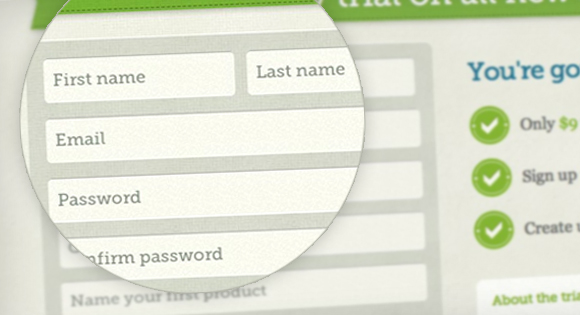
Prototypes are useful tools for UX designers to test design ideas. These interactive prototypes allow designers to collect feedback on their ideas before they are fully developed. In addition to providing a proof of concept for the product, prototyping also helps businesses reduce project costs.
UX designers can use a variety of methods to create prototypes. Many of these tools provide both interactive and visible features. This can make it easier for users to understand the entire process. Many UI/UX tools have a feature that allows team collaboration. This feature allows UX designers to communicate with developers, stakeholders, and other members of their team. It is essential to choose a tool that meets your needs.

A low-fidelity prototype refers to a mockup that lacks realistic interaction. These can be improved to higher-fidelity prototypes during the design process. Low-fidelity prototypes are possible in a variety ways. You can use paper or an online tool to create them. These prototypes are used often to sketch information architecture, user flows, navigation, and other details. They are typically not as interactive as a high-fidelity prototype, but they can provide a great way to explore design ideas.
High-fidelity prototypes are created to look and feel just like the final product. They may be more interactive than final products, but they might still have limited functionality. Clickable links, hierarchy and content are some of the most common features found in high-fidelity prototypes. Framer and Marvel are two examples of high-fidelity prototyping.
Adobe XD is a vector-based UX design app that is available on both mobile and desktop. Although it is available for free, you can opt for a paid version. The app includes a range of features such as user testing, data analysis, feedback management, and feedback management. It integrates seamlessly with Adobe CC Suite of Apps and Portfolio Platform Behance. Adobe's blog has mini-courses and thought articles.
Another popular UI/UX design tool for Sketch is Sketch. Users can quickly create wireframes with the app's easy interface. Advanced controls are available for layers and vectors. Sketch's integration with third-party extensions is another benefit. You can add comments and feedback to your sketches. Mobile-friendly interface also available. It's free so non-designers can use it to create user-flows or other visual elements.

Balsamiq is another prototyping software. Drag-and-drop design interface enables users to quickly build low-fidelity as well as high-fidelity prototypes. This app is compatible across all operating systems. The learning curve can be steep.
UX designers have to be able create interactive prototypes. Understanding the target audience is key to understanding their expectations. Next, a designer will create seamless design strategies for the endpoints and map out user paths.
Although the final product may require multiple rounds of testing, prototypes can help ensure that the product is usable and enjoyable for users. Prototypes help in two ways. One, they lower project costs. Two, they provide direct feedback from users. Ultimately, the success of a prototype depends on how well it aligns with the objectives, goals and user needs of the project.
FAQ
What Is Website Design Software?
Graphic artists, photographers, illustrators, and writers use website design software to create websites and other digital media.
There are two types main website design software options: desktop apps and cloud-based. Desktop apps are installed locally on the computer. You will need to install additional software. Cloud-based apps are hosted remotely on the Internet and do not require any additional software. This makes them perfect for mobile users.
Desktop Applications
Desktop applications may have more advanced features than cloud-based solutions but they aren’t always necessary. Some people prefer to work only from a desktop application because it is more convenient. Some people prefer to use the same tool, regardless of whether it is on a phone or a laptop.
Cloud-Based Solutions
Web designers who want to save time and money should choose a cloud-based solution. These services make it possible to edit any type document from anywhere with an Internet connection. This means you can work on a tablet while waiting for your coffee to brew.
If you decide to use a cloud service, you will still need a license. You won't need to purchase additional licenses if you upgrade to a later version.
These programs can be used to create web pages, if you have Photoshop, InDesign or Illustrator.
What is the best platform for creating a website design?
WordPress is the best platform available for building a website. WordPress offers all the features needed to make a website professional looking.
These themes are simple to install and modify. You have thousands of options for free themes.
Plugins can be used to enhance functionality. These plugins enable you to add social media buttons and forms to your contact pages.
WordPress is easy to use. To modify your theme files, you don't need to be able to code HTML. You just need to click on the icon and choose what you want to modify.
There are many other platforms, but WordPress is my favorite. It has been around for years, and is still in use by millions.
How much does it take to build a website.
The answer depends on what you are trying to achieve with your website. Google Sites may not be required if you simply want to provide information about yourself or your company.
You will likely need to spend more if you want to attract people to your site.
The best option is to use a Content Management System, such as WordPress. These programs enable you to create a website in no time. You won't be hacked because these websites are hosted by third parties.
Squarespace is another way to create a website. The plans range from $5 per month up to $100 per month depending on what content you want to put on your site.
Are I more likely to be hired for a job as a Web Developer if my portfolio is good?
Yes. You must have a portfolio to be considered for a job in web development or design. Portfolios should showcase examples of your skillsets and experience.
Portfolios usually include samples of past projects. You can include anything that demonstrates your skills. Your portfolio should include everything from mockups, wireframes, logos, brochures, websites, and even apps.
What is a website static?
You can host a static website anywhere you like Amazon S3, Google Cloud Storage and Windows Azure Blob storage. Rackspace Cloud Files, Rackspace Cloud Files. Dreamhost, Media Temple. In addition, you can also deploy a static site to any platform that supports PHP, such as WordPress, Drupal, Joomla!, Magento, PrestaShop, and others.
Static web pages are generally easier to maintain since they don't constantly send requests back-and-forth between servers. Also, they load faster because there's no need to send any requests back and forth between servers. Because of this, static web pages are often more suitable for smaller businesses that don’t have the resources or time necessary to manage a website.
Can I build my website using HTML & CSS?
Yes, you can! You'll need to be familiar with web design concepts and programming languages such HTML (Hyper Text Markup Language), CSS, and CascadingStyle Sheets. These two languages make it possible to create websites accessible by all who have an internet connection.
Statistics
- Studies show that 77% of satisfied customers will recommend your business or service to a friend after having a positive experience. (wix.com)
- When choosing your website color scheme, a general rule is to limit yourself to three shades: one primary color (60% of the mix), one secondary color (30%), and one accent color (10%). (wix.com)
- It enables you to sell your music directly on your website and keep 100% of the profits. (wix.com)
- Did you know videos can boost organic search traffic to your website by 157%? (wix.com)
- Is your web design optimized for mobile? Over 50% of internet users browse websites using a mobile device. (wix.com)
External Links
How To
What is website hosting?
Website hosting describes where visitors go when they visit a site. There are two types:
-
The cheapest option is shared hosting. Your website files reside on a server controlled by someone else. When customers visit your site, their requests travel over the Internet to that server. The request is then handed to the owner of that server.
-
Dedicated Hosting - This option is the most costly. Your website is only accessible from one server. Your traffic is private because no other websites have shared space on this server.
Shared hosting is preferred by most businesses because it's cheaper than dedicated hosting. You can use shared hosting if the company owns the server to provide the resources required for your website.
But there are pros and cons to both options. These are some of the major differences between them.
Sharing Hosting Pros
-
Lower Cost
-
It's easy to set up
-
Frequent Updates
-
It can be found on many web hosting companies
Shared hosting can often cost as little as $10/month. This price often includes bandwidth. Bandwidth describes the amount of data that can be transferred over the Internet. Even if only you upload photos to your blog or website, high-volume data transfers may incur additional charges.
You'll soon realize why your old host cost so much once you get started. The majority of shared hosts offer limited customer support. While they may occasionally assist you in setting up your site and other tasks, after that you are all on your own.
Providers that offer 24-hour customer support are worth looking into. They'll take care of any issues that come up while you sleep.
Hosting dedicated:
-
More Expensive
-
Less common
-
You will need to have special skills
With dedicated hosting, all you need to maintain your website are provided. You won't worry about how much bandwidth you are using or how much RAM (random Access Memory) you have.
This means you will need to spend more upfront. However, once you start running your business online, you'll find that you won't need much technical assistance. You'll become an expert at managing your servers.
So Which Is Better For My Business?
This depends on the kind of website that you want. Shared hosting might be best if you just want to sell products. It is simple to set up and easy to maintain. You'll probably receive frequent updates because you are sharing a server hosting many other sites.
However, dedicated hosting is the way to go if you want to build a community around your brand. Instead of worrying about traffic, you can concentrate on building your brand.
Bluehost.com is the best web host for both. Bluehost.com offers unlimited monthly data transfers, 24/7 customer support, domain registrations free of charge, and a 30-day guarantee for your money back.